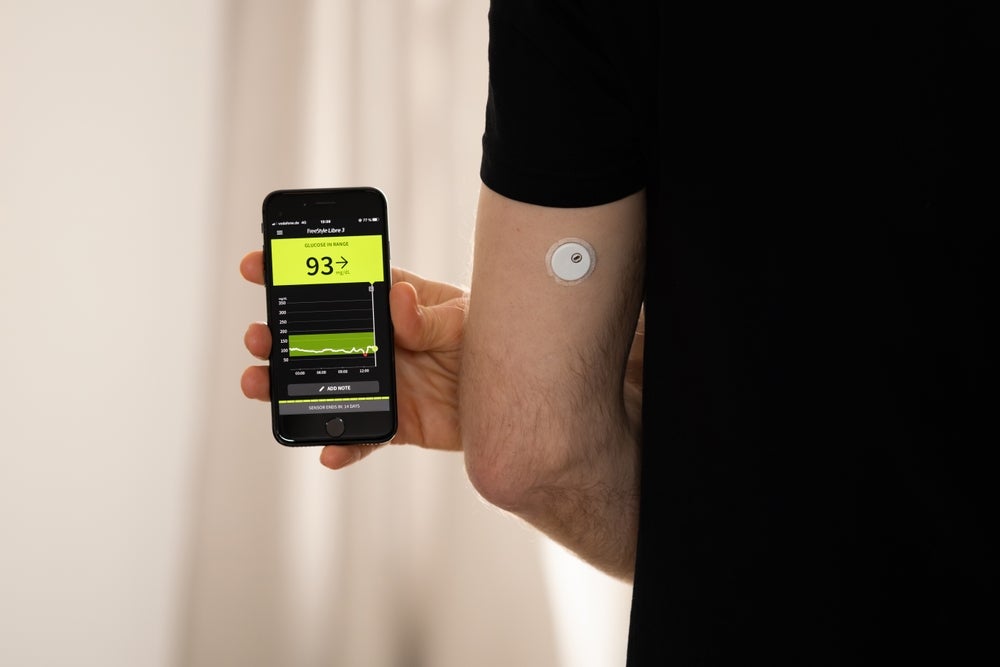
Medical Technology is now available on all devices! Read it here for free in the web browser of your computer, tablet or smartphone.
Conditions involving the musculoskeletal system can be a literal pain in the neck for patients and a complex challenge to treat, but advancements in medical technology are opening up new ways to tackle orthopaedic issues. One such solution comes from Israeli start-up VRHealth, which may have found a way to ease the recovery process using a surprising tool – virtual reality. We take a closer look at how the technology is helping patients.
Also in this issue, we find out how the Calypso Knee System developed by Moximed could prevent the need for major knee replacement surgery, ask if automation could be the key to speeding up diagnostic lab operations, round up key points from the Future of Surgery report, and track the rise of the Epipen as generic challengers begin to appear on the market.
Plus, we explore the potential of a portable, pocket-sized ultrasound device developed by US company Butterfly, check in with a virtual GP to see how a future digital doctor-patient relationship might work, and review the most exciting medical technologies focusing on Parkinson’s disease today.
And, as always, we round up the latest news from the medical device industry, and get comment and analysis from GlobalData’s healthcare analysts.
How well do you really know your competitors?
Access the most comprehensive Company Profiles on the market, powered by GlobalData. Save hours of research. Gain competitive edge.

Thank you!
Your download email will arrive shortly
Not ready to buy yet? Download a free sample
We are confident about the unique quality of our Company Profiles. However, we want you to make the most beneficial decision for your business, so we offer a free sample that you can download by submitting the below form
By GlobalDataIn this issue
Virtual pain relief: could VR start a rehab revolution?
Israeli tech firm VRHealth is aiming to push forward the use of virtual reality in pain management, physical and cognitive therapy and other areas. With VR’s role in healthcare growing, could the technology provide new and effective remote therapy options, and even offer a solution to the opioid crisis? Chris Lo investigates.
Read more.
Calypso Knee System: cutting down on knee replacements
Surgeons at the Ohio State University Wexner Medical Center have performed the first-ever surgery using the Calypso Knee System developed by Moximed. The device acts as a shock absorber for the knee and creates a cushion similar to cartilage in a healthy knee joint. It’s an innovation that’s intended to delay or even prevent the need for major knee replacement surgery, but how does it work? Charlotte Edwards finds out.
Read more.
Roche’s cobas pro: the automated lab
Advances in automated lab technology are helping to address the ongoing labour shortages at clinical laboratories. The cobas pro integrated lab system is Roche’s contribution to the cutting edge. Chris Lo speaks to Roche vice-president and international business leader of SWA systems Dr Benjamin Lilienfeld about the technology and the future of the automated lab.
Read more.
Five ways technology will shape the future of surgery
In the context of the transformative impact technology has had on the 21st century so far, the UK Royal College of Surgeons (RCS) has commissioned a ‘Future of Surgery’ report to look into the effect of technological advances like robot-assisted surgery, genomic testing, 3D bio-printing, AI, and, finally, AR and VR. Allie Nawrat takes a look at the key talking points from the report.
Read more.
Epipen: from monopoly to multiplicity
EpiPen, the brand name given to epinephrine injectors used across the world, has become synonymous with pharmaceutical greed after the patent holder Mylan was shown to have gradually hiked prices from around $50 to over $600. Now, generic versions are starting to appear, introduced first by Teva and now Adamis. Charlotte Edwards examines the role these injectors serve, and how new challengers could affect the market.
Read more.
Pocket ultrasound: a new era of medical imaging
US-based tech company Butterfly has produced a portable, pocket-sized ultrasound scanner that plugs into an iPhone and can be controlled using an app. Butterfly Network president Gioel Molinari speaks to Charlotte Edwards about the scanner and its potential impact on healthcare.
Read more.
The doctor will see you now: making the whole patient-GP relationship virtual
The UK is slowly progressing towards a situation where it may be possible for a patient’s entire relationship with primary healthcare providers, like GPs, to be virtual. From ensuring quick access to patient data, to the patient-doctor consultation and from ordering prescriptions to tracking adherence and feeding back data, a seamless virtual cycle is entirely imaginable– but how will it work in real life? Allie Nawrat finds out.
Read more.
Taming tremors: medical devices for Parkinson’s disease
Parkinson’s disease affects around ten million people worldwide and while some drugs are available, there is currently no cure and little medication to treat symptoms. Various medical devices have, however, come to the aid of sufferers, with more and more being developed all the time. Allie Nawrat takes a look at a few of the most innovative concepts.
Read more.
Next issue preview
In the next issue of Medical Technology, we take a look the potential of smart wearables to disrupt blood pressure management with Ireland-based company DAbl, profile key medical advances in bone reconstruction, and delve into the medical industry’s software problem to find out what can be done to improve the situation.
Plus, we examine innovative ways to power medical devices that offer a potential alternative to battery-reliant products, explore the unique challenges of printing medical materials in space, and find out if a single, harmonised audit system for medical device manufacturing could grow into an extra regulatory layer with a global scope.





